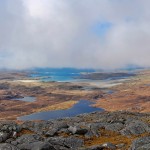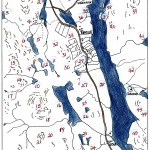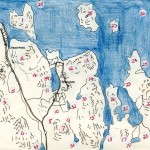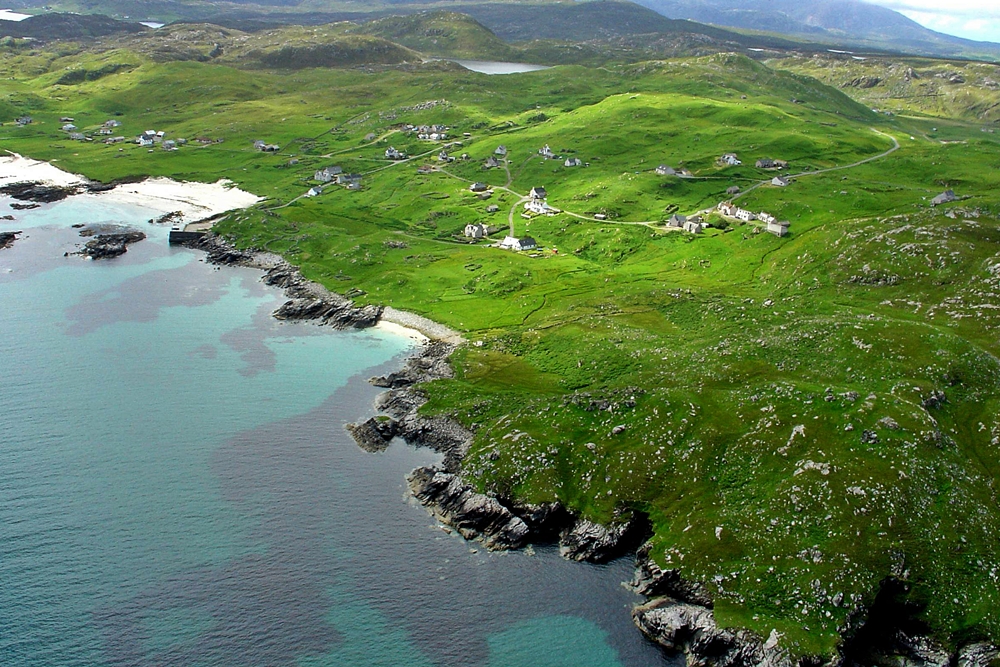Tag: lochroag
William MacGillivray in Uig
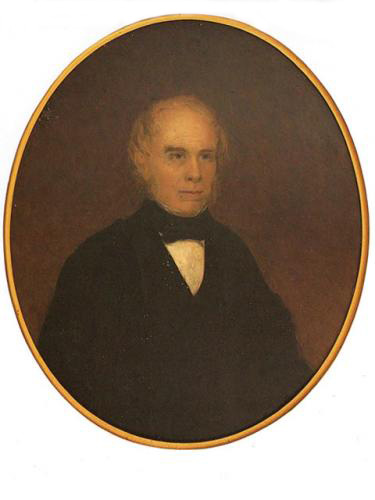
The renowned naturalist William MacGillivray was born in Aberdeen in 1796 and studied and worked most of his life there or in Edinburgh, but he had a Harris connection through his father and spent much of his childhood at Northton in South Harris (where the MacGillivray Centre now bears his name). As a young man, he returned to spend 1817-1818 there, and his diaries of that period have been published as A Hebridean Naturalist’s Journal (Acair 1996). In October of 1817 he and a party of friends and relations made a journey to Uig.
Luachar, Saturday, 18th October.
Let me describe the scenery, shooting grounds, house and its inhabitants. The scenery is generally of the grand order with little or no beauty. We have a long series of lofty mountains, turning into ridges & forming deep glens. These mountains are all rugged & precipitous, they run north-east and south-west. Stretching toward the north from them are low hills and extensive plains several miles in length and toward the south higher hills & vallies. On the declivities and under the rocks are the haunts of the deer, not easily found by a stranger, but well known to the inhabitants. Loch Rezort terminates the ground of sport on the north, the ocean on the west and south, and the Lewes on the east. The whole ground is broken into little eminences & depressions, covered with heath and some other plants – at this season of the year of a yellowish or brown colour, which renders it extremely difficult to see the deer – though the broken nature of the surface facilitates an approach to them when discovered.
The house, our place of rendezvous, is situated at the distance of between one and four miles from the places of resort of the deer, at the head of an arm of the sea which constitutes part of the northern boundary of Harris. It is what in the Hebrides is denominated a black house and what Dr Johnson calls a hut. Its inhabitants are Ewen McDiarmid, a shepherd in the employment of a gentleman of Kintail who has a very extensive tract in Harris under sheep, a tough, unpolished, but honest and civil man advanced in years; his wife Christina McCaskill, daughter of Mr McCaskill schoolmaster of Uig in Lewis, a genteel woman of about thirty; little John their son, a comical cross-grained boy; two female servants, the one a clumsy lump, the other a half-idiot with only one eye.
Luachar, Thursday, 30th October.
On Sunday, the 19th, Ewen and Miss Nelly and I and little John went to Toray, a small farm two miles down Loch Rezort on the Lewis side. One of our incitements to go there was to see two children of Ewen’s who were lodged there. Here we were treated with cream and potatoes. I made a very hearty repast. The vessels which held the cream were only two in number, so the good-man and the good-woman and Ewen were placed about one, while Miss Nelly and I got the other. Had any other arrangement been made, I had been disgusted, and I could not refuse to partake of their fare without being liable to the imputation of pride. We returned in the evening.
Placenames: Enaclete and Gisla
The Uig Landscape
Placenames: Geshader and Strome
Steam Trawling in Loch Roag, 1893
Schools in Uig before the Education Act
The first school in the Western Isles was founded shortly after 1610, when the Seaforth Mackenzies gained possession of the island, and in 1680, a report by ‘Indweller’ says that the Seaforth school had done much good, not only for Lewis but also for the adjacent isles. Other schools followed.
The Departure of the Barlow, 1851
The Marquis of Stafford Sails
A further entry from the 1851 Diary of John Munro Mackenzie, enumerating his difficulties in getting the emigrants away. They sailed first for Troon, and thence for Quebec. It seems the Marquis of Stafford that took them to Canada was a steamer, unless the reference here refers to another boat that transfered them to Troon first (although when she first arrived in Loch Roag, Mackenzie records being on board the Marquis.)
Tuesday 20 May
Arrived at the Port of Ness at 3am having had rather a disagreeable passage from Loch Roag, there being a heavy swell, which brought on Sea Sickness among the women & children and the appearance in the morning of the decks and fore hold were anything but agreeable.
Landed at Port immediately on arrival and walked about for some tiem before any of the Emigrants appeared — Had considerable difficulty in getting the fishermen to get their boats to put the Emigrants on board the Steamer, but after losing much time & using entreaty & force by turns got the Emigrants will their luggage all in boats, but observed the first boat sent to the Steamer returning with her cargo without getting it on board — On proceeding on board the Steamer found that the Uig people had rebelled against allowing any of the Ness people on board saying that there were quite enough on board — that there being fever and smallpox at Ness they would not allow a man on board at this place — I remonstrated with them but to no effect, and the Ness men having taken fright returned to the Shore.
The Marquis of Stafford in Loch Roag
Women of Uig Victorious
We ♥ Strome
An Dotair Ruadh
(picture of Valtos and Kneep by Chris Murray)
An Dotair Ruadh, Donald Macaulay, seventh in line from Dòmhnall Càm, was the son of Dòmhnall mac Sheorais, the tacksman of Linshader who himself became something of a legend because of his size and strength. His son has come down in tradition as equally renowned, but for being something of a chancer. He was a brother of Lily Macaulay who married Rev Robert Finlayson of Lochs, and it seems was also a cousin of Mac an t-Sronaich.
William Matheson reports that he was a small man in black with a red beard and a fiery temper. He studied medicine at Aberdeen but never practiced formally, apparently because he had been expected to succeed Dr Miller in Stornoway and when he was disappointed, he turned to farming instead.
He took a series of tacks, and seems to have made a practice of withholding the rent because of some alleged failure of the proprietor, and going to court over it.
“Strange Conduct of Lewis Crofters”
Highland News, Monday 13 October, 1884:
The Northern Chronicle publishes the following sensational statement which we trust is somewhat exaggerated:– Mr Wm Mackay, Chamberlain of the Lews, has for some time back been engaged in visiting the different parts of the island for the purpose of collecting rents. On Monday last week [30 September 1884] he left for Uig, the people of which district were expected, as customary, to come forward and pay their rents on the following day. The Chamberlain was at Miavaig on Tuesday, to which place a large gathering of crofters and young men marched in a body carrying two banners, on one of which was written “Down with the Landlords” while the other had inscribed on it a Gaelic motto to the effect that the people were stronger than the proprietors. These banners were conspicuously planted in close proximity to Miavaig House, while the people all clustered together on a hillock within a short distance of the road.
The crofters were repeatedly asked to come forward to explain the object of their demonstration, but none answered to the call, until Mr Mackay, recognising one of the men, called him by name, when he came forward and handed the Chamberlain a paper containing requests to the effect that they (the crofters) required all the squatters in the Uig district to be removed off their lands and provided with lands elsewhere; also, that statements be furnished accounting for the expenditure of the school rates, taxes, and road assessments collected for a number of years back; and further that the present holdings of the crofters be increased to the same extent as those occupied by their fore-fathers, and to be held at the old rents.
Members’ Outing to Strome, 24 July
Proposals for Emigration, 1851
Following his tour of the island in the spring of 1851 to assess arrears owed by tenants and determined which of them were “to be emigrated”, the Chamberlain of the Lews, John Munro Mackenzie, drew up the following memorandum (from the Acair publication of his 1851 Diary.) Two emigrant ships, the Marquis of Stafford and the Barlow, sailed from Loch Roag in May and June of 1851.
1. 112 families have volunteerd to emigrate this season. 184 families have been told that they may avail themselves of the proposed means of emigration, which latter number are on an average upwards of £10 in arrears of Rent and the greater number of whom have not any visible means for their support till next crop.
2. It is proposed that the emigrants shall embark during the month of May 1851 either at Stornoway or Loch Roag as may be arranged, a free passage and food during the voyage being secured to them.
3. The locality fixed on as their destination in Qubec [sic] in the first place from when they will be forwarded to the Eastern Townships of Lower Canada, or Montreal in their option.
4. On arrival at Qubec the ordinary Govt Tax or Head Money will be paid by the party sending the Emigrants and for which Tax the Government Emigration Agent will forward them from Qubec to the above localities where employment and land can be procured.
5. By the summonses of removal executed it cannot be inferred that compulsory emigration is in contemplation.


